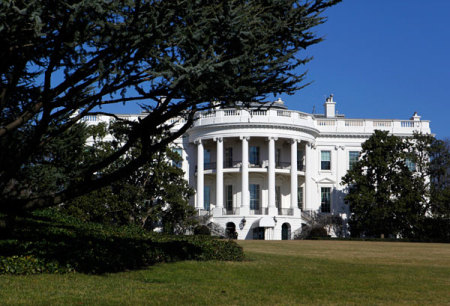Fact Checking Bill O'Reilly: Did White House Slaves Have Good Food and Decent Housing?

Fox News host Bill O'Reilly's recent assertion that slaves who worked on the White House were "well fed" and housed in "decent lodgings" has no historical proof to back it up, expert historians have told The Christian Post.
After first lady Michelle Obama asserted during her speech at the Democratic National Convention on Monday that she wakes up every morning in a "house that was built by slaves," O'Reilly explained on "The O'Reilly Factor" on Tuesday that Obama was right to say slaves worked on the construction of the White House along with immigrants, whites and free blacks.
O'Reilly, however, went on to add that slaves who helped build the White House while America's second President John Adams resided in what was then known as executive mansion were "well fed and had decent lodgings provided by the government."
O'Reilly's comments drew much criticism on social media and sparked a media firestorm. The next day, O'Reilly took to his program to defend his comments.
"As any honest historian knows, in order to keep slaves and free laborers strong, the Washington administration provided meat, bread and other staples, also decent lodging on the grounds of the new presidential building," O'Reilly said on Wednesday. "That is a fact. Not a justification, not a defense of slavery."
Two historians with expert knowledge on slavery and the White House told CP that O'Reilly has no way of knowing the condition of the housing and the quality of the food provided to the slaves who worked on the White House.
Jesse J. Holland, author of the book The Invisibles: African-American Slaves In the White House, told CP that there are no historical records to justify O'Reilly's claim.
"There is no doubt that slaves were provided food and shelter while they were working to build the White House. That is a fact. However, we don't know the quality of either because there are no historical records that support that judgment," Holland wrote in an email.
"What is undeniable is that slaves were not given a choice on what they ate or where they lived," he added. "They were at the mercy of their masters, and dependent on the whims of people who considered them property, not human beings."
Clarence Lusane, the author of The Black History of the White House and the political science chair at Howard University in Washington, D.C., told CP there is no denying that the slaves working on the White House were housed and fed.
Lusane also agreed with Holland's assertion that O'Reilly "has no way of knowing the quality of the housing or what they ate."
"I think the objective of him making those statements had less to do with historical accuracy but [was to] undermine Michelle Obama's real point that people were enslaved and part of that enslavement manifested in the building of the most iconic building in the country — the White House," Lusane argued.
Tasked with not only building the White House but constructing the entire city of Washington in the late 1700s and early 1800s, Lusane explained that the U.S. government once contemplated buying slaves so that the government would have ownership of them. However, the government instead decided to rent slaves through contracts with local slave owners.
Lusane said he also disagrees with any insinuation that slaves who worked on the White House had it better than other slaves who worked in cotton fields, tobacco fields, houses or stables throughout the nation.
"So, the situation of the people who were enslaved was determined by the slaveholder, not by the [three government] commissioners [in charge of building up Washington]. That is the point that Bill O'Reilly is ignorant about," Lusane said. "The people who ultimately controlled the condition of the individual slaves who worked at the White House were the slaveholders. And so they may have been beaten every single day, but Bill O'Reilly doesn't know that."
"They were ultimately people who were enslaved to local slaveholders," Lusane continued. "They may have been contracted, for example, two months to work on removing trees. At the end of that, they were back on the plantation. Or, they may have been contracted for a week to do construction inside of the White House and then go back to their owner. It went back-and-forth like that."
Lusane was asked if there is any historical documentation or proof that slaves who worked on the White House received better treatment than other slaves. He responded, "No, not at all."
"There were circumstances of people who were enslaved who probably lived and were fed a lot better than people who were working on the White House, and then circumstances where people were less," he added.
In general, what slaves were fed and how they were housed varied throughout the nation.
"Often, they were given sort of the leftovers. To say that they were fed well is not anything qualified," Lusane said. "It is more about [if] they were fed consistently. It depended on the circumstances."
Holland told CP that he's pleased a national conversation has begun about the slaves who helped build the nation's capital.
"I am glad there is an ongoing dialogue about this issue, because it's helping to bring attention to a long ignored portion of America's past that proves all of our citizens have a historical stake in our government and our nation's capital," he added.





















